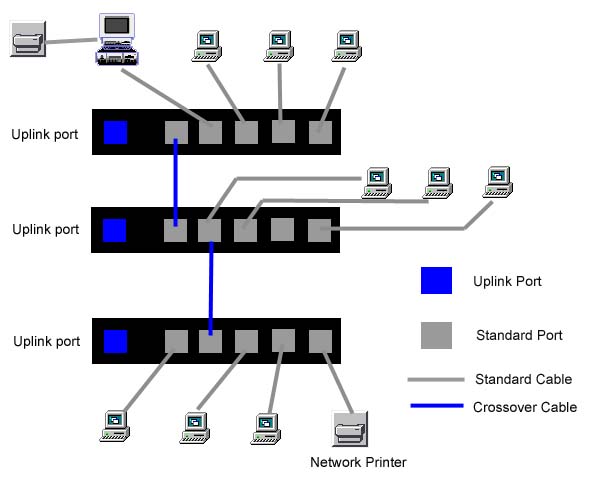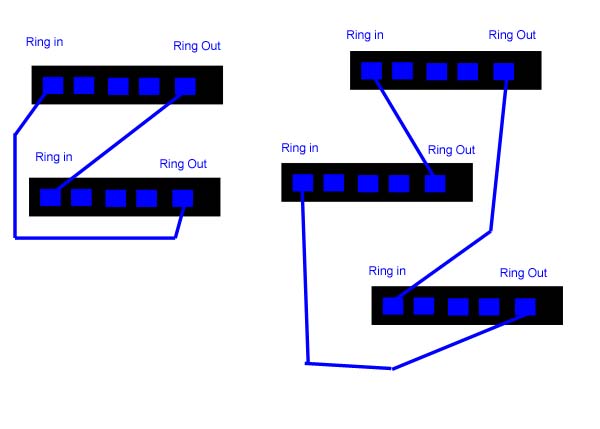
Topology is defined into physical and logical.

Also called Linear Bus, which consists of a single cable called backbone ( trunk/segment) that connects all computers on the network in a line.
In this topology, electronic signals is sent to all of the computers on the network, and the data is accepted only by the computer matches the address in the signal.

Signal Bounce
Because the signal is sent to the entire network, if the signal continue uninterrupted, it'll keep bouncing back along the cable. Which means others computers on the network cannot sent data. So we use a terminator to absorbing the signal.
Disadvantages:
suited for temporary network or network that have less than 10 computers.
¡@
Connects computers in a circle, there are no terminated ends. The signals travel around the loop in one direction and transmitted from one computer to the next computer. (function as repeater)

Disadvantages:
This Topology is very rare.
¡@
For a logical bus hub (Ethernet hub), signals are transmitted from the sending computer through the hub to all computer on the network.

CSMA/CD
CSMA/CD is media access method and stands for Carrier Sense Multiple Access with Collision Detection, usually use with a logical bus network.
It is a passive topology.
Connecting more than one Ethernet Hubs
we usually use UTP cable in Ethernet



Standard UTP cable
Crossover UTP Cable
token passing is also a media access method.
The first started computer make a free token transmit to the network around a ring. Computer must wait for a free token before transferring data.
When a computer receives a free token, it modifies the token and transmits the data around the ring.
When the data is received by the destination computer, an acknowledgment is generated and returned to the source computer. After verifying the acknowledgment, the source computer creates a new free token and pass around the network.
in this topology, only one computer holding the token can send the data, it prevents data collisions.
It is an active topology. Computers act like repeaters to boost the signals.
Token Ring Hub
Advantages of using physical topology:
Disadvantages:
Connecting with MAUs
